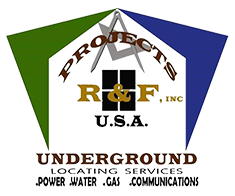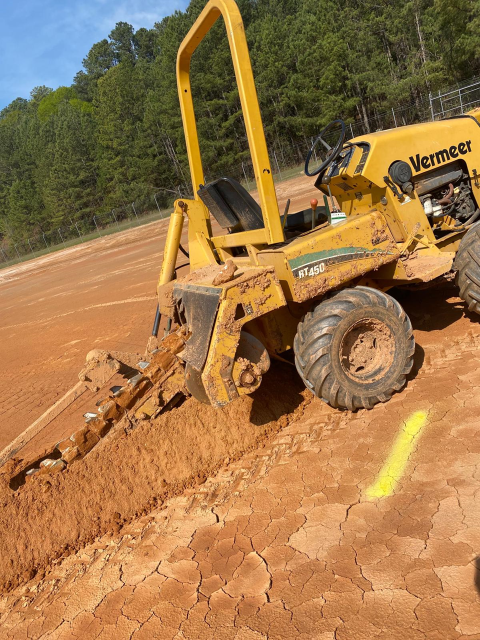Risk Level of Excavation Equipment for Buried Utilities
Knowing the risk level of the excavation equipment is of vital importance to apply the safety rings before starting the excavation. Depending on the equipment being used, the aggressiveness of impact when hitting or breaking a buried service varies. You can see the Risk Level of the different Excavation Equipment here.
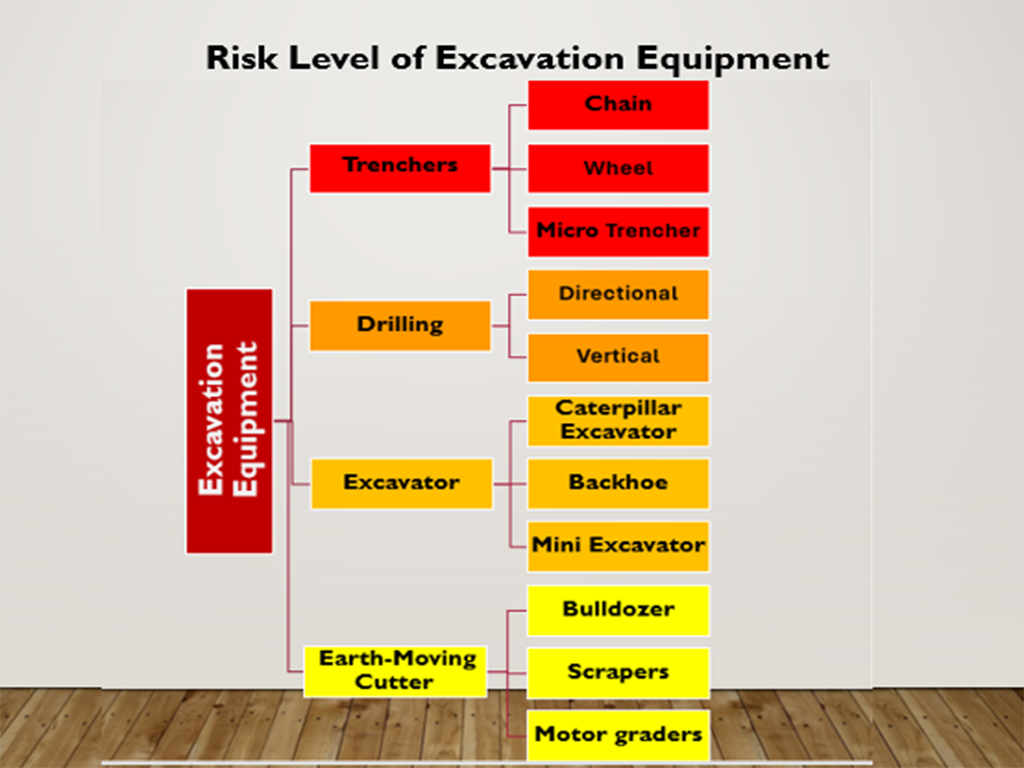
There are different types of Excavation Equipment, depending on the activity to be performed among them: a trench, a vertical or horizontal drilling, a pit, a cut, an earth movement; it is defined which equipment to use, and each of them have different working methods, power, and impact speed. In the table below we show the different types of excavation machines and their risk level from the highest to the lowest.
- Risk Level of Excavation Equipment for Buried Utilities
- 1.- What is a trencher, what types are there and what are their risks?
- 2.- What is a drilling machine, what types are there and what are their risks?
- 3.- What is an excavator, what types are there and what are their risks?
- 4.- What is a Earth-Moving Cutter Machine, what types are there and what are their risks?
1.- What is a trencher, what types are there and what are their risks?
A trencher is a Excavation Equipment used to dig long, narrow trenches in various types of soil. Trenchers are often used in construction to lay pipes, electrical cables and drains, as well as for road maintenance.
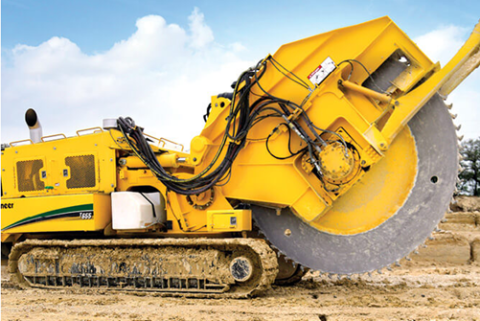
Wheel Trencher – Vermerr-T555111
1.1 Different Types of Trenchers
When it comes to trenching, choosing the right trencher is essential. With so many different types of trenchers available, it can be difficult to determine which one best suits your specific needs. Before deciding, it is important to know the different types of trenchers available.
1.1.1Chain Trenchers
Chain trenchers are among the most used trenchers. They are typically used to dig trenches for utilities such as water and gas lines, as well as for irrigation systems.
1.1.2 Wheel Trenchers
Wheel trenchers are typically used for large-scale trenching projects, such as digging trenches for pipes and cables. They use a circular wheel with teeth along the circumference to dig trenches.
1.2 Risk Level of a Trencher for Buried Utilities
The risks of using a trencher are very high due to its power and aggressiveness of advance, creating a channel, dismembering everything in its path and damaging subway utility lines, such as electrical cables, water or gas pipes, which can cause dangerous leaks or power outages, and explosions can occur.
Avoid a tragedy by requesting a scan of the area before digging. Click here to REQUEST A QUOTE
2.- What is a drilling machine, what types are there and what are their risks?
A drilling rig is excavation equipment used to drill holes in the ground or modify the surface. Drilling rigs are used in construction to drill holes in the subsoil, drill roads, canals.
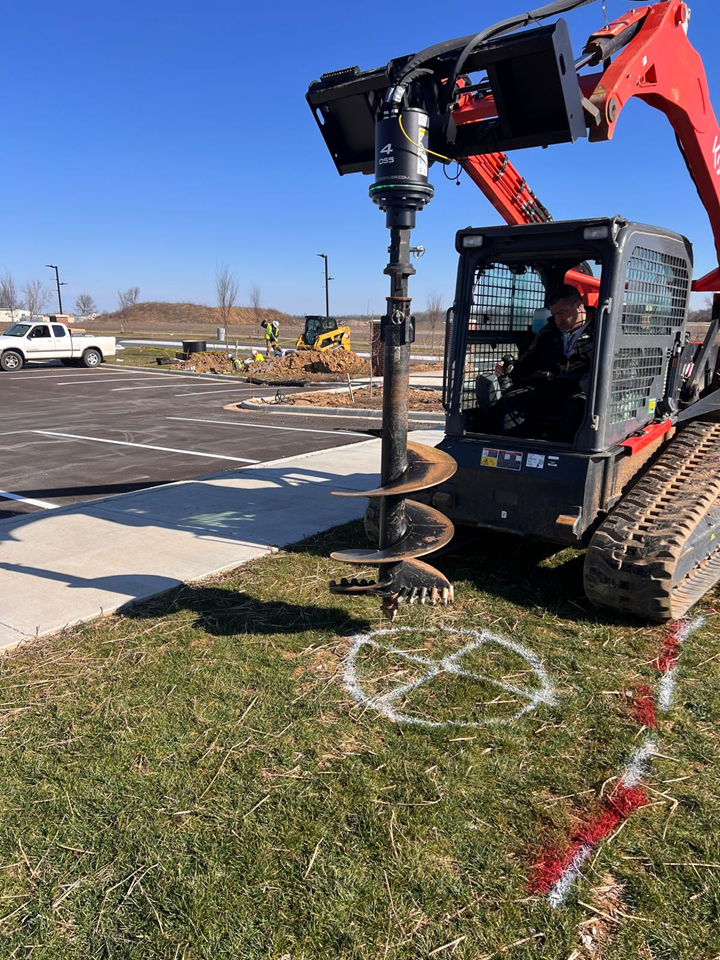
2.1 Different types of Drilling
Basically, there are 2 types: Vertical Drilling and Horizontal Directional Drilling
2.1.1 Vertical Drilling
Vertical drills are stationary machines that use a rotating tool to drill vertical holes in a working surface. They are used to drill water or oil wells, install piles, take samples from subsoil, install posts, signs.
2.1.2 Horizontal Directional Drilling
It is a construction equipment that allows the installation of subway utilities, such as pipes and cables, without excavating the surface. Trenchless technology is ideal for crossing pipelines under rivers, railways, highways and other obstacles.
2.2 Risk Level of a Drilling for Buried Utilities
The risks of using a vertical or horizontal drilling machine are very high because of its power and its drill bit that allows it to fragment or shatter everything in its path. They can damage subway utility lines, such as electrical cables, water or gas pipes, which can cause dangerous leaks or power outages, and explosions can occur.
Avoid a tragedy by requesting a scan of the area before digging. Click here to REQUEST A QUOTE
3.- What is an excavator, what types are there and what are their risks?
An excavator is a heavy machine used for digging; thanks to the bucket-shaped bucket allows you to extract material at different depths depending on the length of the arm and then deposit it around him or directly to a dump truck and can perform activities at an angle of 360 °, circulates through tracks or tires.
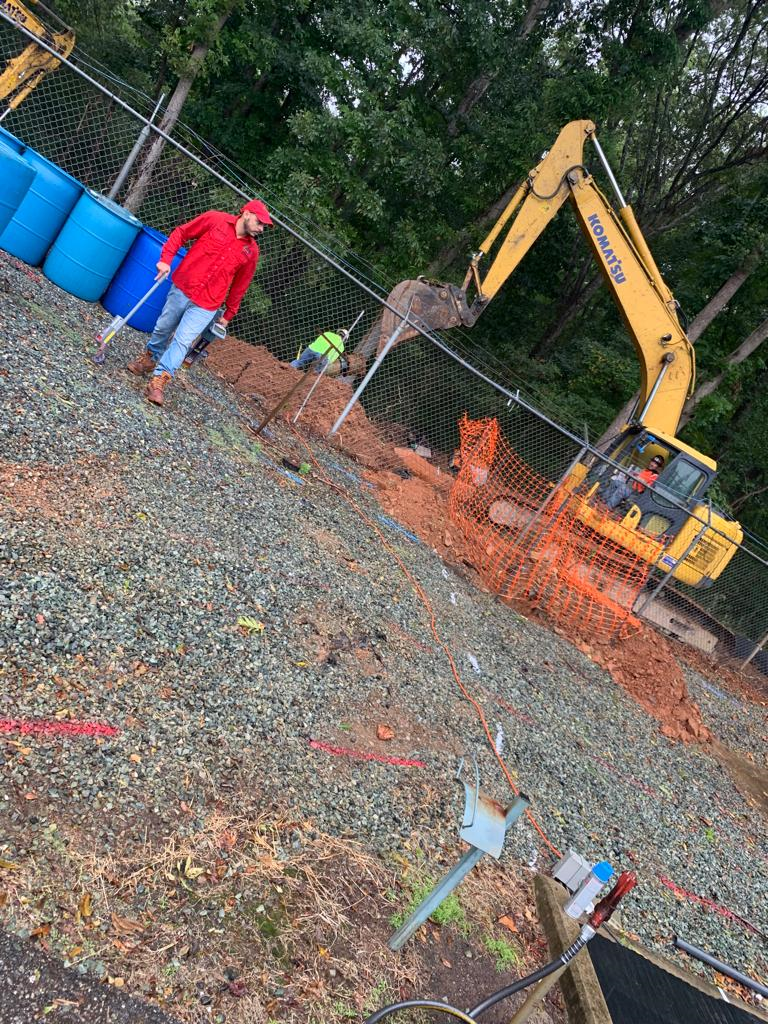
3.1 Different types of Excavators
There are several types of excavators, the most common being the Caterpillar Excavator, Backhoe and Mini Excavator.
3.1.1 Caterpillar Excavator
They are large machines, which move with iron or rubber tracks, which allow a good weight distribution and stability, have a 360º turning chase, have a wide radius of action and an engine power of over 150 HP, depending on the model, which makes it have a great power and offers the necessary strength to meet the most demanding challenges in the field of construction, are widely used for large excavations of ditches, pits and earthmoving.
3.1.2 Backhoe
A backhoe loader is a piece of equipment that has a loader bucket at the front. This bucket has a large load capacity and can push, level, scoop and load different materials. They are normally used in minor construction sites.
At the same time, the equipment has an excavator arm at the rear for digging. On average, this usually has a digging depth of 4 meters. However, this arm can have a maximum extension of up to 7 meters.
3.1.3 Mini excavator
Mini excavators are self-propelled machines that can excavate and unload materials on construction sites. They are very versatile machines for small or narrow places where standard size excavators cannot fit or maneuver properly. Their small size allows them to pass through doorways and maneuver more easily in tight spaces. They can make 360° turns on their own axis.
3.2 Risk Level of an Excavator for Buried Utilities
The risks of using an excavating machine are medium because the operator can observe the area where he is digging, he can also hear and feel when he hits a pipe, but in case the cables are destroyed at the instant of hitting it, consequently they can damage subway utility lines, such as electric cables, water or gas pipes, which can cause dangerous leaks or power outages, and explosions can occur.
Avoid a tragedy by requesting a scan of the area before digging. Click here to REQUEST A QUOTE
4.- What is a Earth-Moving Cutter Machine, what types are there and what are their risks?
They are heavy machines for carrying out earthworks. This is one of the initial stages of any construction, where a series of actions are carried out on the land to clear it and prepare it for the following phases of the project. This activity is carried out with heavy machinery. Initially, all types of weeds are removed, and then the cutting and/or filling is carried out according to the indications on the plans. The machines to be used for these activities are:
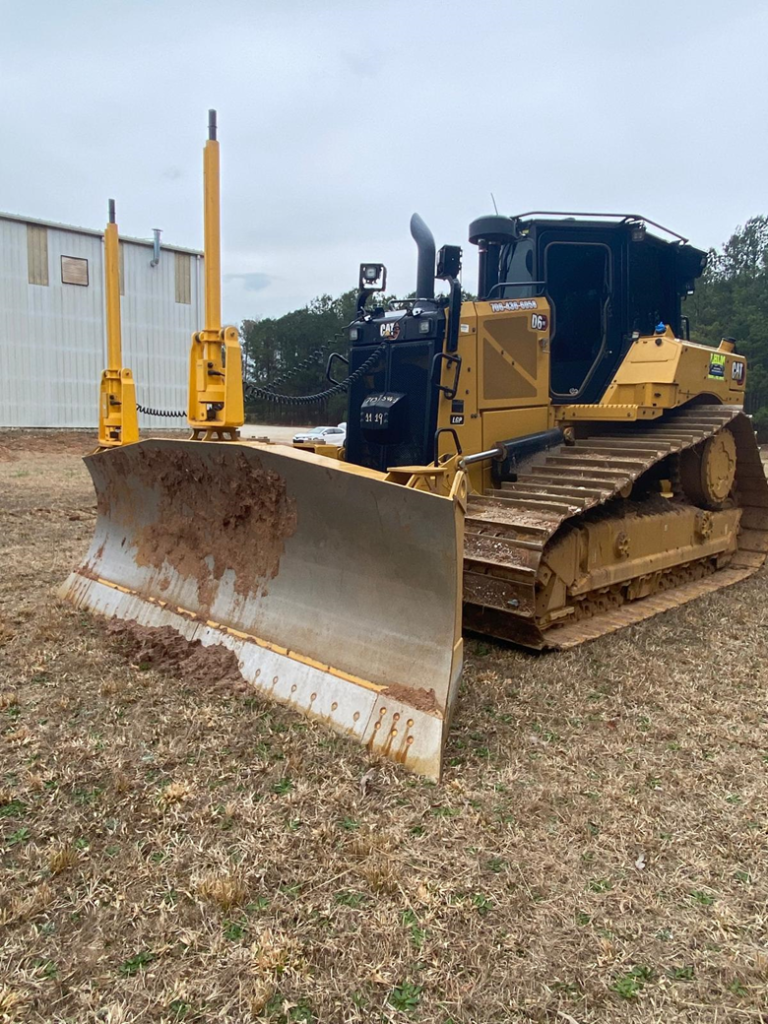
Bulldozer / Caterpilla – D6
4.1 Different types of Cutting Equipment
There are different types of Cutting Machines in Earth Moving, among them are Bulldozer, Scraper, Motor grader, each of them has a specific function in Earth Moving work, the Caterpillar Excavator is also included in that group.
4.1.1 Bulldozer
Cut, remove and push the earth with its front blade. The efficiency of these machines is limited to movements of just over 100 m horizontally. There are two types: bulldozer (fixed blade) and angledozer (its blade can pivot on a vertical axis). It is characterized by removing elements at a shallow depth; Likewise, it is used especially to carry out operations at short distances.
4.1.2 Scraper
These machines are used to cut uniform layers of soil to a smooth consistency, opening the blade located at the front of the container. As it advances, the cut material is pushed into the container. When it is full, the blade is closed, and the material is transported to the place where it will be deposited.
4.1.3 Motor grader
The Motor Grader or grader is especially used when leveling the terrain or refining slopes is required. It has scarifiers, which are perfect for hard terrain. It is an extremely versatile machine, especially when refining slopes as it can do so with different inclinations.
4.2 Risk Level of a Cutting Equipment for Buried Utilities
The risks of using earth moving machines are medium because the operator can observe the area where he is digging, he can also hear and feel when he hits a pipe, but in case the cables are destroyed when hitting it, consequently they can damage subway utility lines, such as electrical wires, water or gas pipes, which can cause dangerous leaks or power outages, and explosions may occur.
Avoid a tragedy by requesting a scan of the area before digging. Click here to REQUEST A QUOTE
Conclusion
Excavation equipment has different levels of risk at the time of excavation, therefore safety measures must be more tenacious, for higher risk equipment, the engineer builder must rely on information with the various utilities, on existing plan, and as a measure of high importance, request the scanning of the area, with companies of Certified Location and of high experience to be able to realize a safe excavation without damaging some public service, PROJECTS R&F USA, consists of Certified Locators and with the appropriate training to locate them adequately all the buried public services and indicating the depth of them.
Recommendations
https://www.bigrentz.com/blog/earthmoving-equipment
